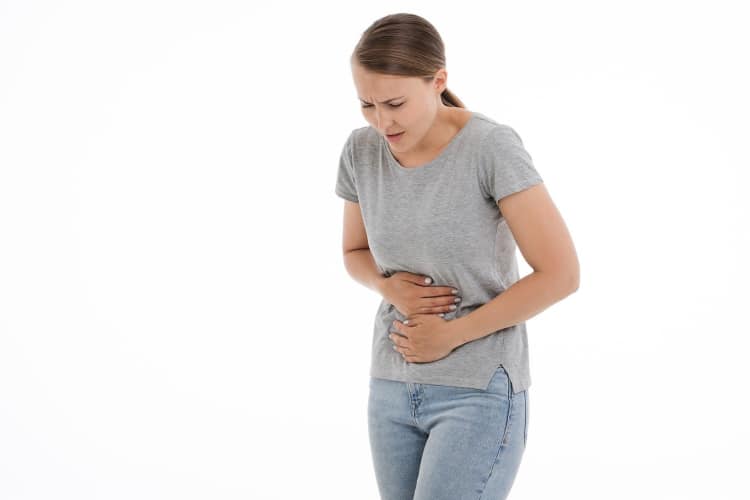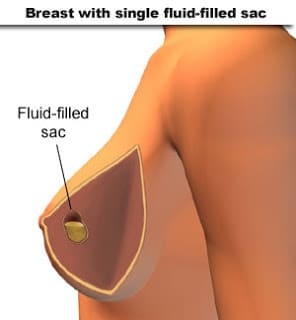
Can You Get Rid of a Pilonidal Cyst Without Surgery?
Pilonidal cysts can be a source of pain and disruption, often necessitating medical intervention. While surgery is commonly recommended for complete cyst removal, there are non-surgical methods that can provide relief and aid in natural healing. In this article, we will explore these non-surgical options and discuss the possibility of eliminating a pilonidal cyst without the need for surgery.
Table of Contents
Understanding Pilonidal Cysts
Pilonidal cysts are small, fluid-filled sacs that frequently develop in the crease between the buttocks. They can cause discomfort, pain, swelling, and even infection. Traditional treatment typically involves draining the cyst and surgical removal. However, non-surgical approaches can be considered as an alternative option for those who may not require surgery.
Managing Pilonidal Cysts at Home
For mild cases of pilonidal cysts, there are several natural home remedies that can help reduce symptoms. Regularly soaking in a warm bath can promote drainage and alleviate inflammation. Adding Epsom salt or essential oils, such as tea tree oil, to the bathwater may enhance the healing process. Additionally, applying warm compresses directly to the cyst can alleviate pain and aid in healing.
The Importance of Antibiotic Treatment
If the pilonidal cyst becomes infected, your healthcare provider may prescribe antibiotics to manage the infection. Antibiotics can effectively reduce inflammation and prevent the infection from spreading. This treatment approach is often combined with other non-surgical methods to facilitate healing and prevent future occurrences.
Maintaining Cleanliness and Hygiene
Proper hygiene in the affected area is vital in preventing pilonidal cysts from worsening or recurring. Regularly cleansing the area with mild soap and warm water can help keep it clean and free from bacteria. It is also important to avoid excessive moisture and opt for loose-fitting, breathable clothing to promote healing.
Making Lifestyle Adjustments
Certain lifestyle changes can significantly contribute to preventing and managing pilonidal cysts. Prolonged sitting can worsen symptoms, so taking frequent breaks and avoiding long periods of sitting can be beneficial. Maintaining a healthy weight and leading an active lifestyle can also reduce the risk of developing these cysts.
In conclusion, while surgery is often the recommended treatment for pilonidal cysts, there are alternative approaches that can potentially eliminate the cyst without the need for surgery. It is important to consult with a healthcare provider to determine the most suitable course of action for your specific case.
Natural Home Remedies for Pilonidal Cysts

Garlic
Garlic deserves to top the list when it comes to the natural healing of pilonidal cysts because it is a powerhouse of antibiotics and antifungal properties. When consumed internally, garlic is a powerful immunity booster, assisting our body in fighting infection and encouraging the healing process.
How to apply:
- Crush 1 or 2 cloves of garlic into a fine paste and apply directly to the infected area. Cover it with a bandage for a few minutes before rinsing thoroughly with water. You can repeat this remedy for a few days.
- Add 2 or 3 cloves of garlic to your daily diet to improve the immune system.
Warm Compresses
This is a very simple and effective way to reduce the swelling and relieve the pain caused by pilonidal cysts. Warm compresses also promote blood circulation to the cyst and boost healing.

Tea Tree Oil
Certain essential oils for pilonidal cysts work great. For example, tea tree oil is a great essential oil for pilonidal cysts. It’s packed with antifungal, antioxidant, and antibacterial properties. Tea tree oil is proven to be able to shrink the cyst and reduce inflammation. I just had a friend who had a pilonidal cyst. I told them to use tea tree oil, and they did. The next day after only using it for one day, the pilonidal cyst shrunk in size by 50 percent.
How to apply:
- The simplest way is to use a dropper to apply tea tree oil to the cyst directly.
- Or you can dilute tea tree oil with water and then use cotton to keep it pressed on the cyst for 10 minutes before rinsing and drying. It’s safe to repeat this action 3 to 4 times a day.

Epsom Salt
Epsom salt is another simple yet effective remedy to treat pilonidal cysts. Salt helps draw out toxins or liquid from the cyst and shrink it down considerably. Adding Epsom salt to your bathtub and relaxing for 15 minutes can really reduce pain and avoid further irritation and inflammation caused by pilonidal cysts.
Black Tea Bag
With its acidic properties, black tea is a natural healer of pilonidal cysts, keeping the infection at bay. Its anti-inflammatory nature is also a good source of pain and swelling relief.
How to use:
- Dip a black tea bag in hot water for a few minutes, then squeeze the excess water from it and hold it over the infected area for 10 minutes. You can do this several times a day.

Turmeric
Turmeric is well-known for one powerful compound – curcumin which is extremely effective in healing and infection prevention. Besides, antioxidants and anti-inflammatory properties found abundantly in turmeric also provide relief from pain and drain out extra liquid from the cysts.
How to apply:
- Add a few drops of water to 2 teaspoons of turmeric powder to make a fine paste.
- Smear the paste to the infected area and rinse with warm water after the pus dries out.
Aloe Vera
Many people have been counting on Aloe Vera to cure skin-related conditions thanks to its anti-inflammatory and antibacterial agents. So no wonder Aloe Vera is trusted to assist in the natural healing process and infection avoidance of pilonidal cysts.
How to apply:
- The first method is to directly rub the flesh of fresh Aloe Vera into the infected area and leave it for 5 to 10 minutes before washing it with warm water.
- Another option is to use a cotton ball soaked with Aloe Vera gel and cover the infected area well with that. You also leave it for 5-10 minutes, then rinse it off with lukewarm water.
- It is safe to use Aloe Vera several times a day.
Good Hygiene
As obvious as it sounds, it is very important to maintain good hygiene if you want to get rid of pilonidal cysts and prevent them from spreading. Please note that you should not try any creams or gels without a doctor’s consultation, a high chance you can irritate the inflammation further.
Apple Cider Vinegar
This amazing, multifunctional liquid is the next guide to the natural healing of pilonidal cysts. Being acidic by nature means apple cider vinegar can balance the skin’s pH level, kill bacteria, and effectively remove toxins from the cysts.
How to use:
- You can dip a cotton ball in apple cider vinegar and keep it on the cyst for 5 to 10 minutes.
- Or wash the infected area with vinegar twice a day.

Healthy Diet
When you consider your diet, please remember what you eat also makes an impact on the healing process. Pilonidal is likely to spread when your immune system is weak, so eat healthy foods that strengthen the immune system, such as vegetables, fruits that are rich in vitamins A and C, nuts, yogurt, garlic, ginger, etc.
This article hopes to show you there are easy-to-make natural home remedies for pilonidal cysts that you can use simple ingredients to treat pilonidal cysts effectively.
Conclusion
While surgery is often necessary for severe or recurrent pilonidal cysts, non-surgical approaches can provide relief and aid in natural healing for less severe cases. From home remedies and antibiotic treatment to proper hygiene and lifestyle modifications, there are various non-surgical options available that can help manage pilonidal cysts effectively. However, it’s important to consult with a healthcare professional to determine the best course of action based on your individual condition.
Remember, if you are experiencing persistent pain, worsening symptoms, or recurrent episodes, it is vital to seek medical attention for proper evaluation and guidance.
Pilonidal Cyst Treatment After Surgery
If your incision is left open, it may take from a few weeks to several months to heal. After the incision has healed, you will have a scar where the cyst was removed. This will fade and become softer with time. Most people can return to work and most activities after 2 to 4 weeks.
Suggestions










